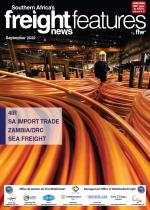Af ter a year in office, Zambian president Hakainde Hichilema is still riding the crest of a wave as the outlook for Zambia remains fairly positive despite the major challenges the government still faces.Hichilema’s promise to fix the economy and debt crisis through better fiscal management and accountability was followed up by some key appointments, most notably that of Situmbeko Musokotwane as the finance minister, Felix Nkulukusa as the Treasurer Secretary, and the internationally renowned Denny Kalyalya as the Bank of Zambia governor.Taking the bull by the horns, the new team set out to woo the International Monetary Fund (IMF) by requesting financial assistance – a move they hope will bear fruit by no later than the end of August.This comes after the official Creditor Committee for Zambia, co-chaired by China and France, provided financing assurances to the IMF which is expected to meet at the end of the month to approve the lending plan to Zambia.The country has received some crushing blows in the past decade. Former president Edgar Lungu’s ambitious infrastructure programme saw the country borrowing heavily for a decade. During the same period, a drop in copper prices and an ongoing drought hit mining and agriculture hard. The final nail in the coffin was the Covid-19 pandemic which brought Zambia to its knees as the economy went into recession, contracting by 4.9% in 2020. It also became the first country in Africa to default on its debt during the pandemic.According to the latest figures by the IMF, government debt is at 123% of GDP and the country owes some $16 billion to external lenders.“Debt is a major challenge for Zambia,” says Duncan Bonnett, a partner at Africa House. “There have been some large infrastructure projects around, such as the airport and several road upgrades that were simply not sustainable. Zambia has been highly indebted for years now – and even more so during the pandemic. It is not an issue that one can ignore by any means.”Since Hichilema took over, the failing economy has shown some positive signs of recovery. “He has developed a clear strategy to address the debt crisis, looking at debt restructuring, engaging various creditors,” says Bonnett. “The new regime has had a positive impact as investors are again looking at Zambia and there is a fair amount of positivity about the changes being introduced by the new government.”Plans are afoot to expand the agriculture, mining and tourism industries in a bid to generate average growth of 4.2% from 2023 to 2025, compared with the 3.1% forecast for this year. Zambia has also stated it will significantly increase its copper production and has committed to moving from 800 000 tons of copper per annum to two million tons a year. Several infrastructure projects are also being considered and are already in the pipeline or being implemented as the country boosts efforts to improve economic growth.According to Bonnett, Zambia must expand its mining activity, having lost ground to the Democratic Republic of the Congo in recent years. Much of this will be dependent on copper – a commodity that has struggled with volatile prices.“The country is on the right track and they are seeing investors interested again for the first time in years. They have started taking steps in the right direction,” concludes Bonnett.

